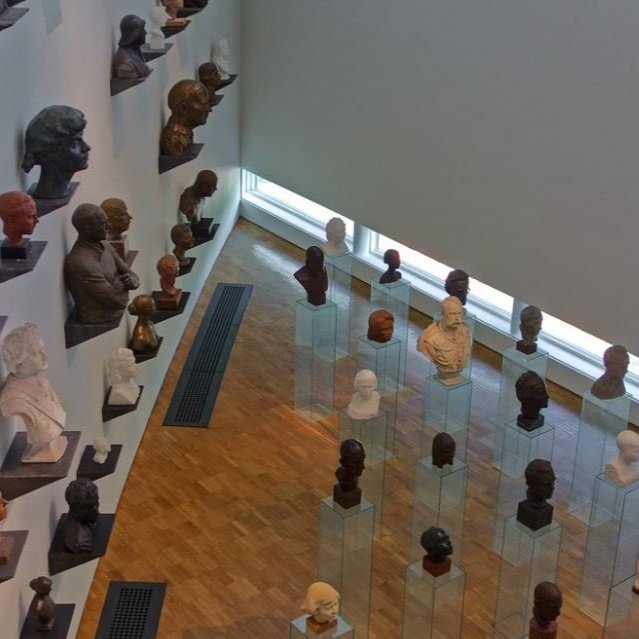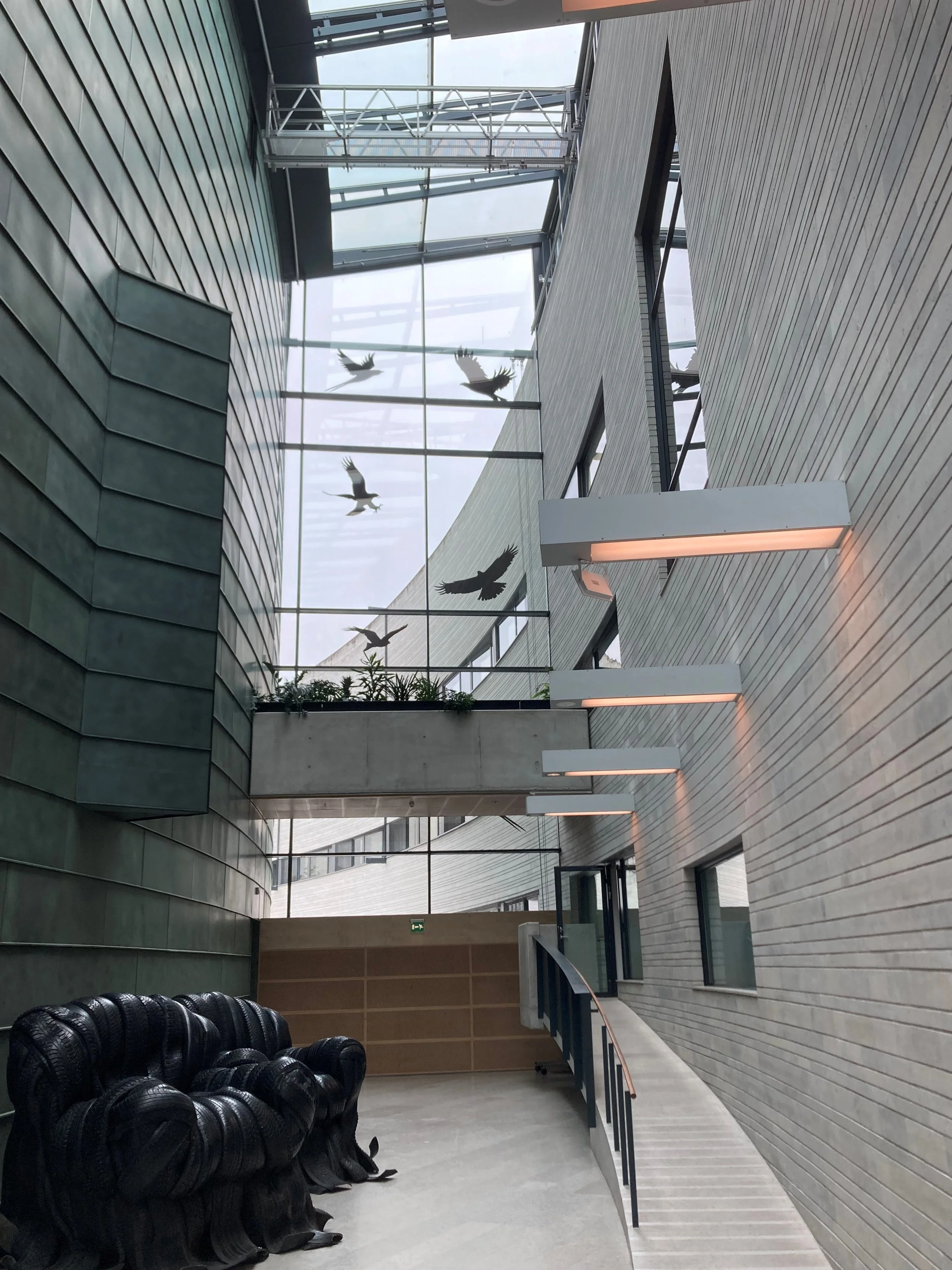Kumu Art Museum, Tallinn – Contemporary Art Museum
CC Image courtesy of Jean-Pierre Dalbéra, Wikimedia Commons
If you are visiting Tallinn, a trip to Kumu Art Museum should be high on the list of things to see and do.
The Kumu Art Museum is located about 2km away from the Tallinn Old Town and is situated on the limestone cliff between Kadriorg Park and the Lasnamäe district.
The Kumu Art Museum is a contemporary art space that forms part of the Art Museum of Estonia, and is the largest exhibition venue in Estonia. It serves both as Estonia's national gallery, with collections of classical and contemporary Estonian art from the 18th century to the present day; and as a national centre for contemporary art.
The Kumu Art Museum has been arranged as a family friendly museum that seeks to engage with younger audiences. The museum provides worksheets with activities, for each of its exhibitions, which encourages the visitors to create their own art and engage with the artworks.
Below is a guide to Kumu Art Museum to help plan your visit. The details I’ve included are correct at the time of writing this blog post, but please check current details before your visit.
Table of Contents
The Exhibitions at Kumu Art Museum
Kumo Art Museum’s Building
After Estonia had regained its independence, the construction of the new main building for the Art Museum of Estonia was conceived. An international architectural contest was organised, with the winner of the contest being Finnish architect Pekka Vapaavuori. The Kumu Art Museum opened in 2006.
Pekka Vapaavuori’s architectural design was based on a circular building with a large and lofty atrium. The building is built into the limestone cliff of Lasnamägi, and through the use of local materials, such as dolomite, wood and copper, harmoniously integrates with the landscape around it.
The Exhibitions at Kumu Art Museum
The Kumu Art Museum contains a number of permanent exhibitions. These include:




Landscapes of Identity: Estonian Art 1700-1945. This exhibition is located in the A-wing on the 3rd floor and introduces the Estonian art of the country’s multinational history, from the intertwined German and Estonian culture, the role of art in the young nationhood, art during the Second World War and the shaping of local landscapes.
Conflicts and Adaptations: Estonian Art of the Soviet Era (1940-1991). This exhibition is located in the A-wing on the 4th floor. This exhibition represents the art that was born out of the conflict of the Second World War and the new political order that followed.
The Future is in One Hour: Estonian Art in the 1990s. This exhibition is located in B-wing on the 4th floor. With the birth of a new nation, the 1990s generated new artistic ideas. Social changes and changes to the media are reflected in the art.
Annually, Kumu holds eight to ten major temporary exhibitions of both historical and contemporary art from Estonia and abroad. These are predominantly located in the Great Hall, which exhibits research projects, international collaborative works, and within the Gallery of Contemporary Art on the 5th floor.
Some of the recent temporary exhibitions include:
Art in the Comfort Zone? The 2000s in Estonian Art. This exhibition is being held until October 2022. This exhibition is held in the Gallery of Contemporary Art on the 5th floor. This exhibition explores economic growth and internationalisation experienced during the 2000s and how these themes are expressed through art.
Archaeologists of Memory: Vitols Contemporary Art Collection. This exhibition on the 5th floor and will last until February 2023. This exhibition focuses on central and eastern European contemporary art.
Art of Science. This exhibition is being held in B-wing on the 3rd floor until 2023 and seeks to explore the interactions between art and science in the past and present.
Kumu Courtyard
The Kumu Courtyard has a series of art treasures hidden within it, which is a fun activity, especially for children.
Kumu Auditorium
The Kumu Auditorium is another great facility within the art museum. The Kumu Auditorium includes a programme of films, concerts and theatrical performances. It is also the location for the KuFF Art Film Festival.
Workshops at the Kumu Art Museum
From September to May, the Kumu Educational Centre organises various courses and workshops from painting, drawing, graphic art and ceramics. Art studios and workshops offer opportunities to develop creativity in a unique setting at the Kumu Art Museum.
Kumu Art Museum Opening Hours
Monday - Closed
Tuesday and Wednesday - 10.00–18.00
Thursday - 10.00–20.00
Friday to Sunday - 10.00–18.00
How to get to Kumu Art Museum
The Kumu Art Museum is situated between Kadriorg Park and the Lasnamäe district at Weizenbergi 34 / Valge 1, 10127 Tallinn.
It can take about 35 mins on foot from the city centre. It is reached from Narva Road to Kadriorg Park.
For a quicker route, the Kumu Art Museum can be reached by Tram, using Lines 1 and 3, although it is a 10 minute walk from the tram stop.
It can also be reached by bus using Lines no. 31, 67 and 68, which will take you straight to the art museum.
Kumu Art Museum Ticket Prices
Adult tickets cost €12
Family tickets cost €24 (Family tickets allow up to two adults and their underage children entry to the exhibition.)
Kumu Art Museum Shop
The Kumu Art Museum shop includes various products inspired by the exhibitions taking place in Kumu, as well as a selection of postcards, books and other memorabilia linked to the collections of the Art Museum of Estonia.
The Kumu Art Museum shop also sells jewellery, textiles, glass and ceramics by well-known Estonian designers and artists.
I hope you have found this post about Kumu Art Museum useful. If you have visited this museum, I would love to hear your thoughts or if you feel something is missing from this post, please email me and let me know at sarahransomeart@gmail.com.




